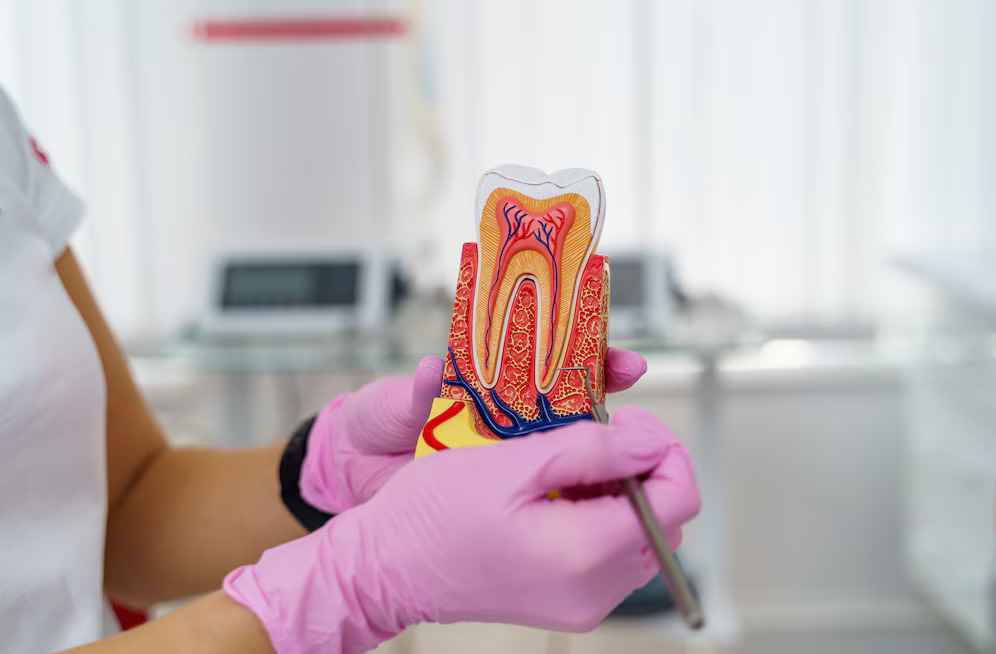Root Canal: Procedure, What It Treats & Recovery

Strong 8k brings an ultra-HD IPTV experience to your living room and your pocket.
When a dentist mentions the possibility of a root canal, many people often feel anxious or fearful. The procedure has long been associated with pain and discomfort, but modern dentistry has transformed root canals into a routine, relatively painless treatment that helps save teeth from extraction. Understanding what a root canal involves, what it treats, and the recovery process can help ease any concerns and allow you to make an informed decision about your dental health.
A root canal therapy in Deltona is used to treat an infection or inflammation within the pulp of a tooth. The pulp is the innermost layer, containing nerves, blood vessels, and connective tissue. If the pulp becomes infected due to deep decay, cracks, or trauma, it can lead to severe pain and, if left untreated, tooth loss.
What is a Root Canal and Why is it Needed?
A root canal is a dental procedure designed to remove infected or inflamed tissue from the center of a tooth. The goal is to save a tooth that would otherwise need to be extracted due to damage or disease affecting the pulp, which can result in abscesses, pain, and infection.
Root canals are typically needed when:
Deep decay reaches the pulp.
Cracked or broken teeth expose the pulp to bacteria.
Trauma causes pulp damage.
Severe infections can cause inflammation or abscess formation.
By removing the damaged pulp and sealing the tooth, a root canal prevents further infection and preserves the tooth, allowing you to keep it functional and natural.
The Root Canal Procedure
The procedure usually takes one to two appointments, depending on the severity of the infection and the complexity of the tooth. Here's a general overview of the steps involved:
Examination and Diagnosis: The dentist will first take X-rays to assess the extent of the infection and the condition of the tooth. Based on this, they will determine if a root canal is necessary.
Anesthesia: Local anesthesia is administered to numb the tooth and surrounding area, ensuring you are comfortable and pain-free during the procedure.
Accessing the Tooth: The dentist makes a small opening in the crown (top) of the tooth to access the pulp chamber.
Removing the Infection: The infected or damaged pulp is carefully removed using specialized instruments.
Cleaning and Shaping: The inside of the tooth is thoroughly cleaned and shaped to prepare it for the filling.
Sealing the Tooth: After cleaning, the space is filled with a biocompatible material (usually gutta-percha) to seal the root canal.
Restoration: In most cases, a tooth is capped with a crown after the root canal to restore its function, appearance, and strength.
What Does a Root Canal Treat?
A root canal treats several conditions that affect the pulp of a tooth. These include:
Severe tooth decay that reaches the pulp
Infections or abscesses within the pulp
Trauma or cracks that expose the pulp to bacteria
Gum disease that affects the tooth's root and pulp
By addressing these issues, a root canal helps eliminate pain, prevent the spread of infection, and save the natural tooth, which is often the best option for long-term oral health.
Recovery After a Root Canal
While the root canal procedure itself is generally painless due to anesthesia, recovery can take a few days. Here's what to expect:
Post-Procedure Discomfort: After the procedure, it is normal to experience some discomfort, soreness, or mild pain for a few days, particularly if an infection or inflammation was present. Over-the-counter pain relievers like ibuprofen can help manage this.
Swelling and Sensitivity: Mild swelling may occur around the treated tooth, and the tooth might be sensitive to pressure or temperature for a short time. This is typically temporary and should subside within a few days.
Avoid Hard Foods: It's advisable to avoid chewing on the treated side of your mouth for a few days to give the tooth time to heal.
Follow-up Care: In some cases, a follow-up appointment may be scheduled to ensure the tooth is healing properly and to check for any further infection. If a crown was placed, it may require adjustments to ensure a proper fit.
Full Healing: It may take several weeks for the tooth to heal completely. If you experience persistent pain or other symptoms, it’s essential to contact your experienced Deltona dentist to ensure there are no complications.
Conclusion
A root canal is a highly effective treatment that can save a damaged tooth and relieve pain caused by infection. It is designed to address the underlying problem, prevent the need for tooth extraction, and restore your tooth to full function. While the procedure itself is not as daunting as it may sound, proper post-care and follow-up appointments are essential to ensure the best outcome and long-term oral health.
If you're experiencing tooth pain or discomfort, don’t delay treatment. Consult your dentist to determine if a root canal is the right solution for you and take steps to preserve your natural smile.
Note: IndiBlogHub features both user-submitted and editorial content. We do not verify third-party contributions. Read our Disclaimer and Privacy Policyfor details.


